The thermostat is an important part of your car's engine system. It is an essential component that regulates the temperature of the vehicle. But how long does a car thermostat last? We researched this question, and here is what we found.
An engine thermostat does not stop working at a specific time, but most car experts advocate replacing your automobile thermostat every ten years. However, this is a positive figure. Thermostats are more prone to fail significantly sooner than ten years.
Read on as we discuss how a car engine thermostat works, why it is important, and the factors that affect its life. In addition, we'll tackle the warning signs indicating that you need to replace your engine thermostat, how to replace it, and the various types of thermostats available on the market.
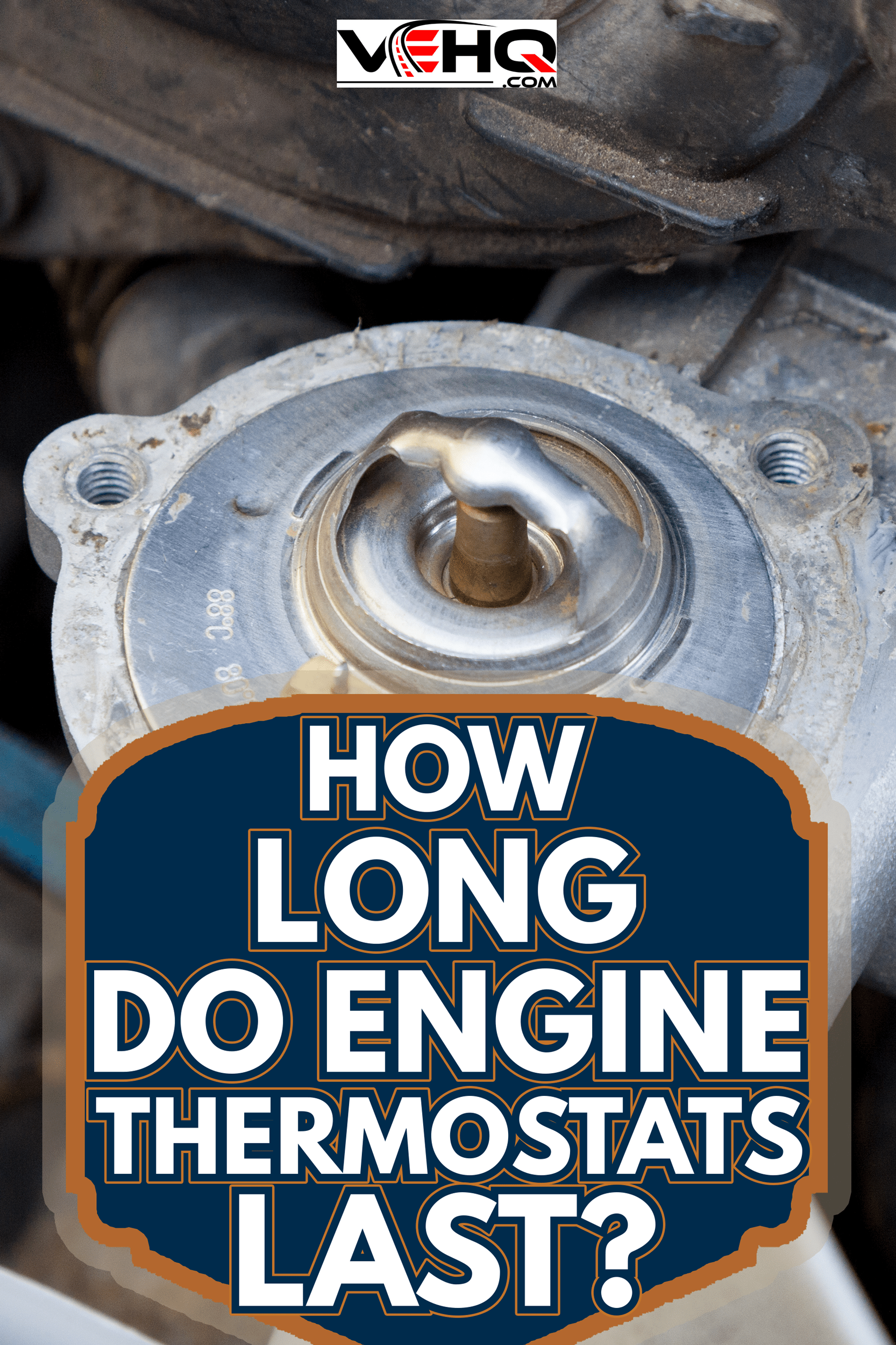
What Is A Car Thermostat and How Does It Work?
The function of a car thermostat, which is essentially a valve, is to stop or allow the flow of coolant into the engine based on temperature variations.
To find out more, you can check out this article: What Does a Car Thermostat Do?
What Is A Car Thermostat Made Of?
A primary valve, secondary valve (also known as a bypass valve), seal, springs, and charge cylinder make up the thermostat. The wax in the charge cylinder has a predetermined melting point (the point at which the wax changes from solid to liquid). In most engine-cooling water systems, wax transforms from solid to liquid at around 80°F.
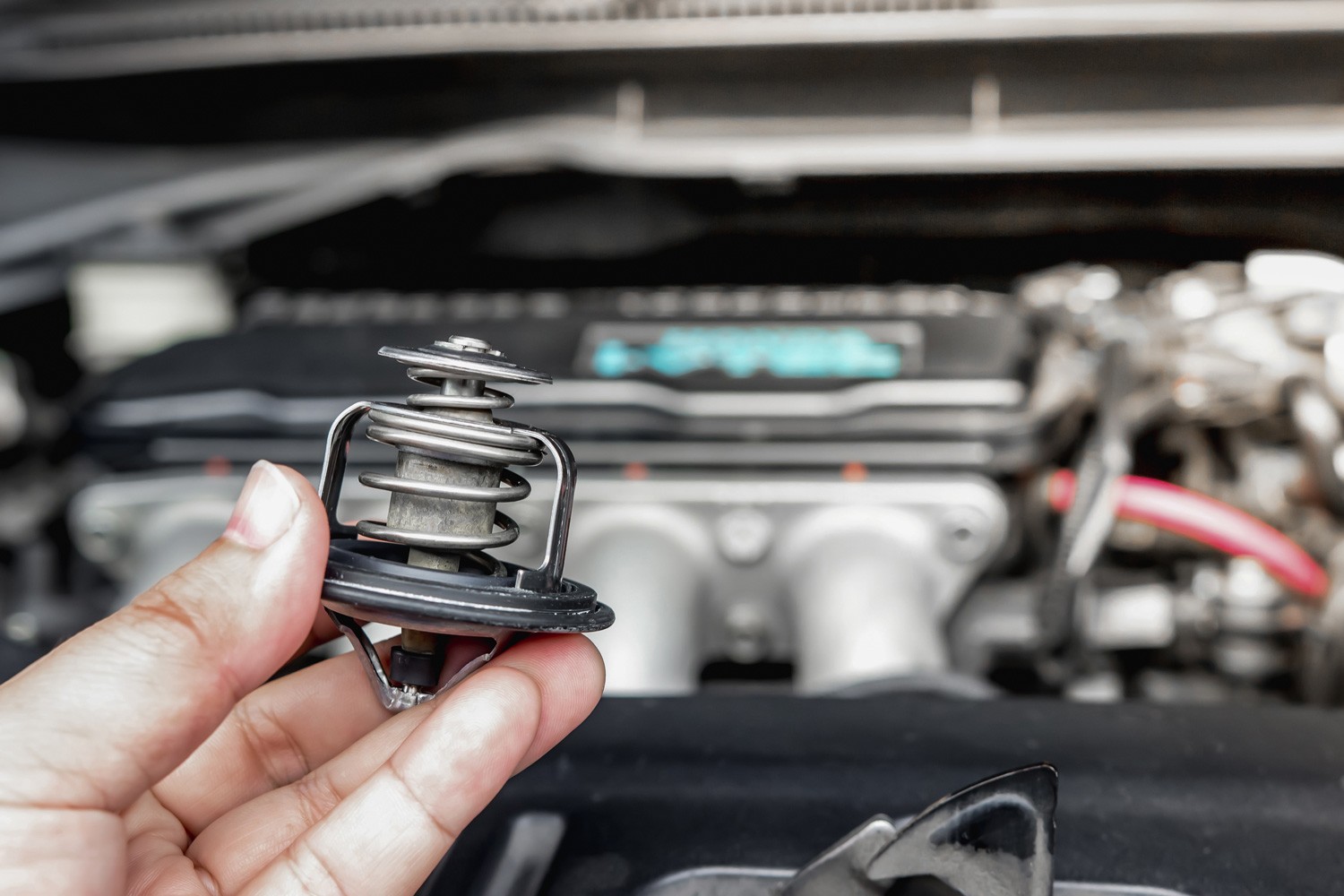
Why Is A Car Thermostat Important?
Without a thermostat, the engine would lose heat to the radiator and take longer to warm up. The thermostat controls the flow of coolant to the radiator to maintain a steady temperature once the engine has achieved the optimum operating temperature.
When the coolant gets too hot, the thermostat opens all the way, leaving the engine fully reliant on the radiator to maintain a constant temperature.
The engine will keep cool as long as there is enough air movement through the radiator.
What Are The Factors That Can Affect A Thermostat's Life Span?
Harsh weather, severe driving conditions, a faulty engine, and faulty thermostat parts are all reasons that might cause an early thermostat failure.
If the thermostat fails, you should get it checked or replaced as soon as possible. An unregulated failed thermostat can rapidly overheat the engine, reducing the engine's quality and efficiency. As a result, automotive maintenance programs are required to extend the life of car parts.
What Are The Signs Of A Malfunctioning Car Thermostat?
Here are some symptoms you need to look out for to know when your car thermostat needs replacing:
- Overheating Engine
- Engine Fails to Warm Up
- Fluctuation of Engine Temperature
- Engine Low Performance
Overheating Engine
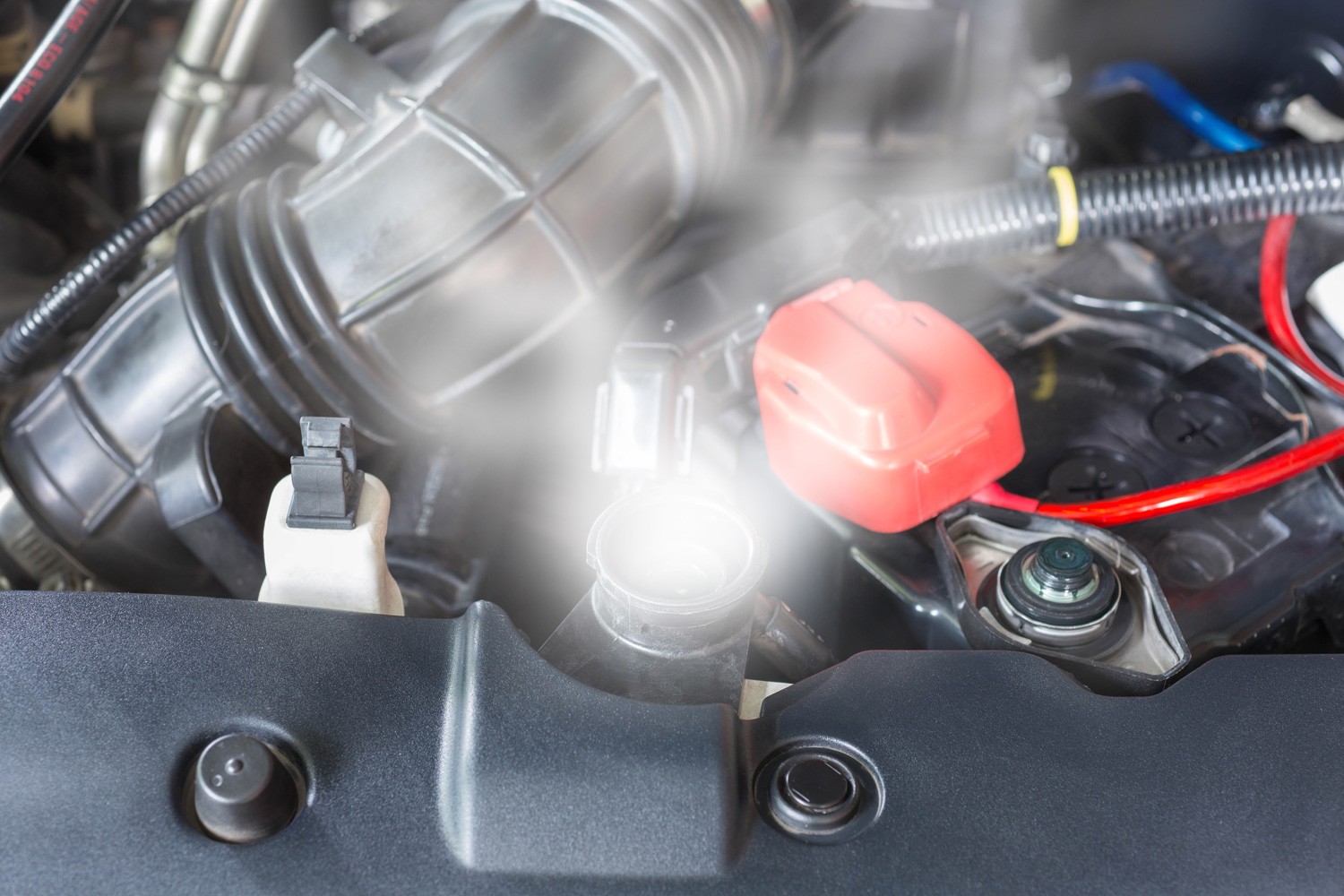
The primary reason for car engine overheating is usually related to the radiator, which includes the thermostat. Fluid cannot circulate and cool down if the thermostat valve is stuck in the closed position, for example. There is a risk of serious harm if the engine is left running.
Engine Fails To Warm Up
If the thermostat valve is stuck open or has deteriorated, the car's heater may not work properly. The engine is unable to maintain its optimum operating temperature because the fluid circulates continually. This can cause performance concerns, resulting in low fuel efficiency and accelerated engine component wear.
Fluctuation Of Engine Temperature
When the thermostat valve is unable to maintain its position (open or closed), temperature variation occurs. This can lead to inaccurate temperature measurements and disrupt coolant circulation.
Engine Low Performance
We already know how a car thermostat can alter the performance of an engine. Because several variables can contribute to poor performance, check for a defective thermostat before proceeding with additional testing.
A broken thermostat could cause engine failure in the middle of the highway. To make matters worse, if the radiator and engine need to be fixed as well, your car repair bill will be significantly higher.
When Should You Replace A Car Thermostat?
Even though a thermostat can last a decade, it's a good idea to change it about as often as your temperature control systems.
A thermostat doesn't need to be replaced unless it stops opening and closing when it's intended to, aside from this type of preventive maintenance. If it remains closed, coolant is trapped in the engine, causing it to overheat.
If it remains in the open position, coolant will circulate continuously through the engine and radiator, preventing the engine from achieving full operating temperature and efficiency and reducing the climate system's heat output.
How To Replace An Engine Thermostat?
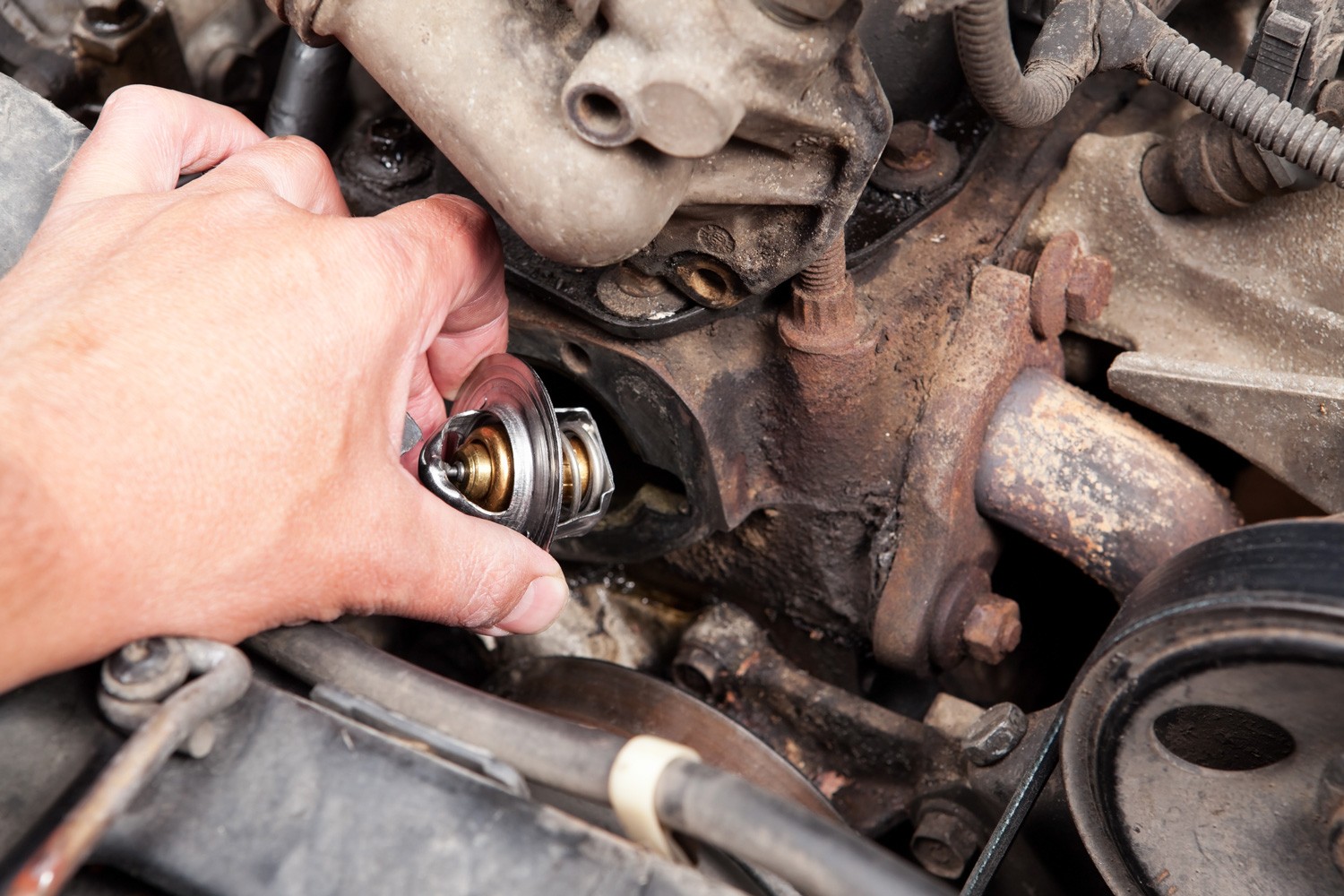
If you are experiencing the symptoms mentioned above relating to a bad thermostat, then it is time to replace it. In doing so, you need follow these three steps:
- Part 1: Taking Out the Old Thermostat
- Part 2: Setting up the New Thermostat
- Part 3: Coolant Replacement
Part 1: Taking Out the Old Thermostat
Before you do anything else, you must remove the damaged thermostat. To do this, you should:
- Allow 30–60 minutes for your car to cool down before making repairs. Open the hood and lightly touch the engine to determine whether it feels warm. You can work securely if it's chilly to the touch.
- Find the radiator, which is a tall black box under the hood, just behind the grille in the front of the engine bay. To unscrew the circular cap on top of the radiator, spin it counterclockwise. To avoid losing the cap, set it aside while you're working.
- Look under the vehicle for a little plastic wing nut or plug towards the bottom of the radiator. To ensure that the coolant doesn't spill or make a mess while you're working, place a drip pan directly under the plug.
Click here for this drain pan on Amazon.
- Turn the radiator's drain plug counterclockwise until a continuous stream of coolant pours into the drip pan. By peeking inside the radiator, you can check the coolant levels.
- Withdraw enough coolant to expose the thermostat, then tighten the plug clockwise once half of the coolant has flowed out.
- Follow the pipe from the top of the vehicle's radiator to the engine side. The thermostat housing will be located where the hose joins the engine.
- With a ratchet, turn the two bolts on each side of the housing's flange counterclockwise. You can easily raise the housing to disconnect it from the engine after loosening the fasteners.
- When you see the thermostat, grasp the top using the pliers and pull it straight out.
Part 2: Setting up the New Thermostat
- Replace the thermostat and gasket with one that has the same heat rating. To prevent coolant leakage while the car is running, look for a thermostat gasket that fits the shape of the housing's flange.
- Maintain a 45-degree angle with a scraper against the housing flange. Scrape away any remaining residue from the previous gasket with gentle pressure.
Click here for this scraper on Amazon.
- Continue scrubbing until the flange is completely smooth. Scrape the engine's flange after that.
- Look for the pointed valve on top and the spring on the bottom of the new thermostat. Insert the thermostat into the engine's port and tighten it down.
- Align the holes on the gasket and the engine flange. If any of the holes or ports are blocked, the thermostat will not function properly.
- Place the housing on top of the gasket and align the bolt holes. Hand-tighten the bolts until they are snug. Then tighten the bolts with your ratchet until you feel resistance.
Click here for this ratchet wrench set on Amazon.
Part 3: Coolant Replacement
- Fill the reservoir to the top with coolant. Continue to pour coolant into the reservoir until it reaches the fill line on the side.
- Put the radiator cap back on the radiator. To keep the coolant from splashing or leaking, tighten the cap clockwise and seal the radiator.
- Start the vehicle. Allow the engine to warm up and activate the thermostat by letting it idle for 5–10 minutes.
- Make sure the gauge on the dashboard does not rise over 3/4. Then turn off the vehicle.
- Once the engine has cooled down, replenish the coolant. Check the coolant levels by opening the reservoir cover and adding more if necessary.
Click here for this product on Amazon.
What Are The Types of Car Thermostats?
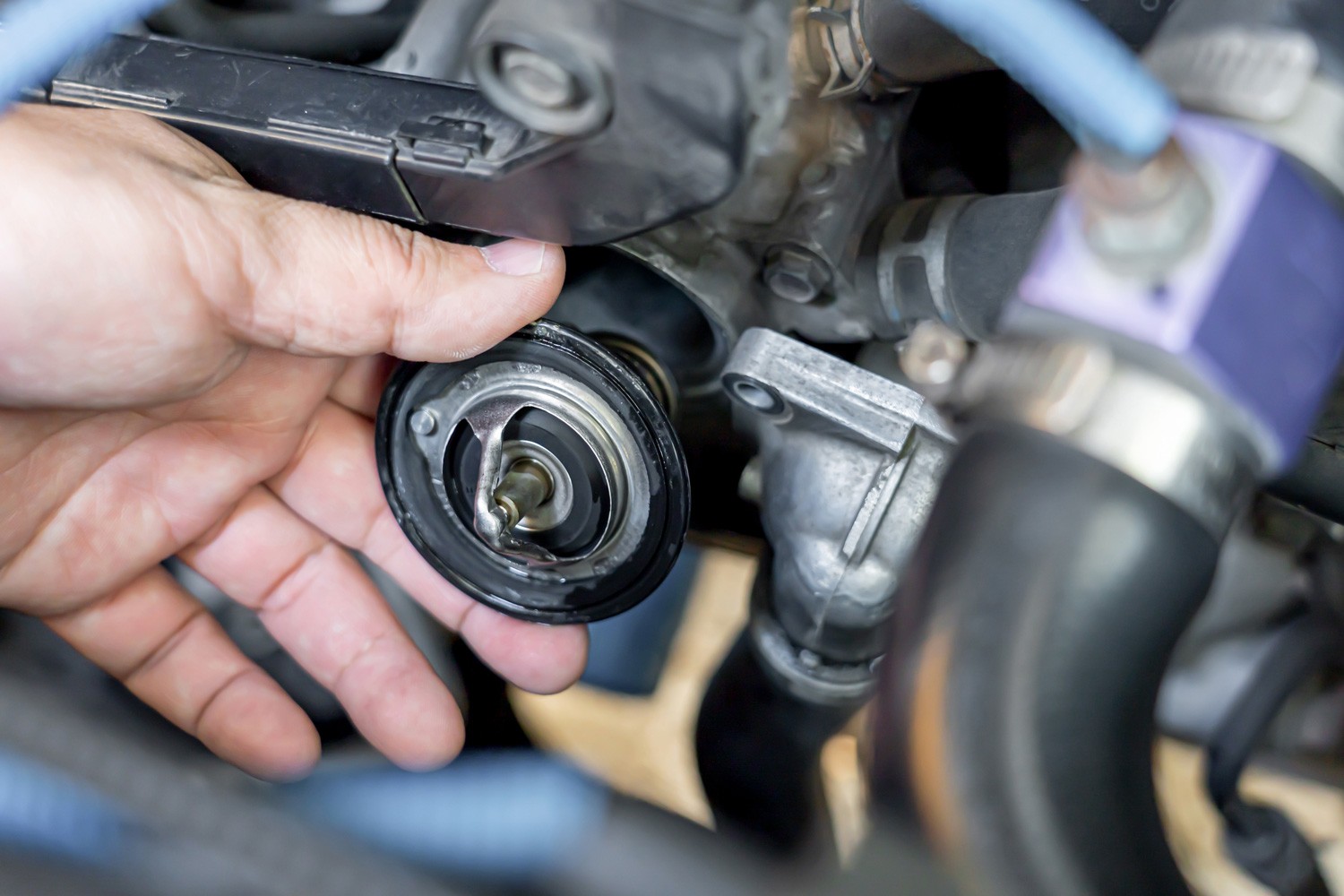
There are three types of thermostats. These are:
- Traditional Thermostats
- Housed Thermostats
- Map-controlled Thermostats
Traditional Thermostats
These types of thermostats have no electronic components and rely on the expansion of enclosed wax to function. The wax expands as the temperature rises, and the gate that opens the conduit moves with it. If it cools, though, the wax contracts again, sealing the hatch.
Housed Thermostats
Integral thermostats with well-designed enclosures are known as housed thermostats.
Map-Controlled Thermostats
These thermostats are a reliable bet for increased efficiency. An electrically assisted thermostat offers more flexibility and speed than a regular thermostat. The engine management system controls these variables.
In Conclusion
Although most car thermostats don't usually have a fixed service life, experts recommend replacing them every 10 years. However, the need for replacement depends upon whether or not you spot the signs of a malfunctioning thermostat.
Before you leave, you can check these related articles:




